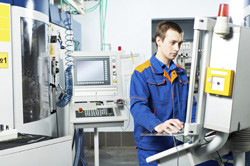Collaborative tool design
The movement started in the United States in the 1970s whereby user opinions were evaluated to influence product design ('user as subject'). The model was moved forward by northern Europeans who evoked the 'user as partner' co-designing model. Obviously, letting the user in on the design phase can be important to a product's success. European researchers put participatory design to use with a co-design environment, enabling European machine tool manufacturers to collaborate with designers, end users and component suppliers. With EU funding of the 'Adaptive business collaboration by progressive knowledge sharing and engineering' (TRANSPARENCY)(opens in new window) project, machine tool builders established knowledge-based networks for the design and operation of specialised machine tools. Human–machine interfaces collect data at the machine tools themselves. The collaboration among all stakeholders facilitates tailoring machine designs to life-cycle requirements with established algorithms for life-cycle cost and overall equipment effectiveness predictions. The TRANSPARENCY project delivered a web-based co-design environment for machine tool builders that will enhance the efficiency of designs by incorporating input from designers to end users, including life-cycle considerations. In this way, EU manufacturers should be more competitive compared to low-cost players in the field. Bringing end users in on the design process will also boost the level of design knowledge on the part of tool users. TRANSPARENCY has given proof to the old adage that, when we all work together, we all pull ahead.



